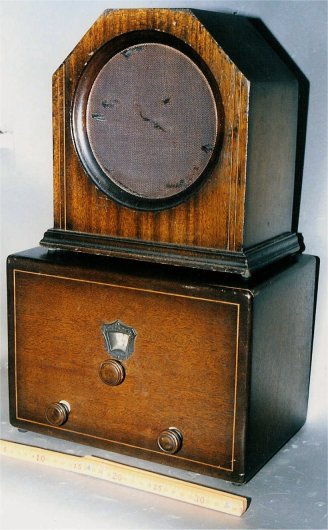
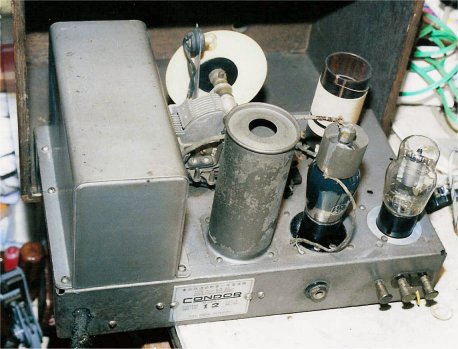
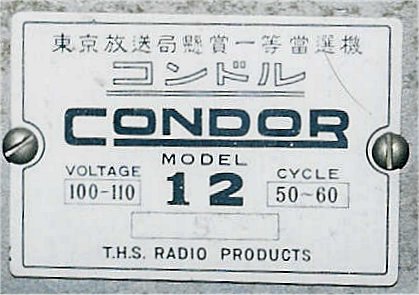
Tokyo Central Broadcasting Station's winning sets by the contest
1931
In early 1930’s, Broadcasting Corporation needed high quality and low priced
radio set.
Tokyo Central Broadcast Station (JOAK) held the contest of AC set in 1930.
Regulation of circuit was 2 tubes except rectifier tube.
In 1931, at the 2 nd contest, National (Matsushita) and Condor (T.H.S)
products awarded first prize.
The 2 manufacturers start their success stories in Japanese radio industry.
Broadcasting Corporation increased output power and built more local stations to extend service area.
In early 1930’s, Many simplified 3 tubes set put on the market.
However, Service area that could receive 3 tubes set was not extended by Japanese topographical reason.
Later, 4 tubes set became main stream of Japanese radio.
Condor Model 12 3 tubes Regenerative (1931T.H.S. Radio Products) JPY 35.00



TUBES: 227-112A-112B, Regenerative, Magnetic Speaker
Condor Model 12 was one of first prized sets of the 2 nd contest in 1931.
Circuit was commonplace and small cabinet was well made.
The manufacturer continued their business as Nitsuko Ltd.
This example kept good condition. But tubes were modified.
Appeard on the magazine "Musen to Jikken"(The Radio Experimenter's Magagine) 12/1931 published by Seibundo-Shinkosha
(Collection No.11557)
National Model R-51 "Tousen-go" 5 tubes TRF (1932 Matsushita Denki Sesakusho)
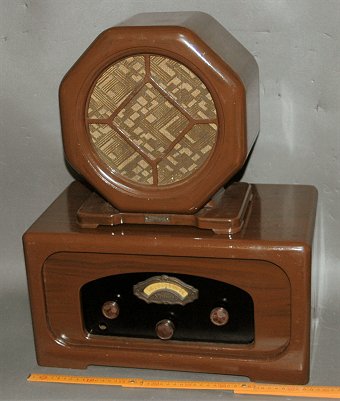
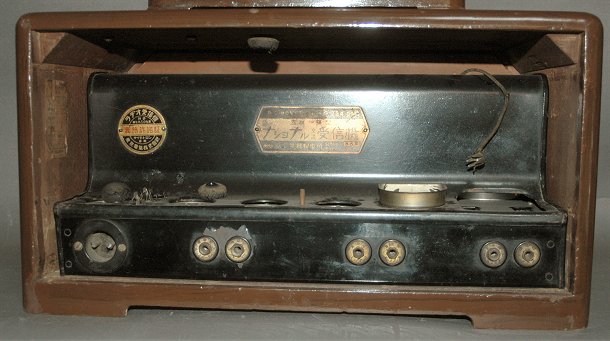
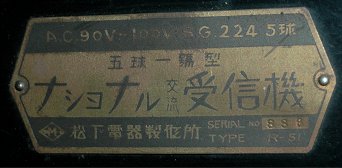
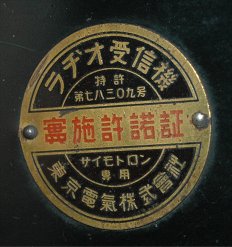
Name plate (left) and license plate of Tokyo Electric Co., Ltd.
TUBES: UY224-UY227-UX226-UX112A-X112B, TRF, Magnetic Speaker
Matsushita were awarded first prize of 2 nd contest.
Awarded set used cathedral cabinet.
Circuit was 3 tubes regenerative (227-226-112B).
Mass production model was changed into separated cabinet.
This model R-31 “Seicho-go (Clear listening) was first Matsushita radio set.
Model R-31 was fixed regenerative circuit. Sensitivity and gain were not enough.
4 tubes Model R-41 and 5 tubes TRF Model R-51 “for DX” was added.
Matsushita called this series "Tousen-go"means "The Winner".
The concept of first Matsushita radio was high quality and trouble free.
Chassis was well made and installed strong lacquer finished cabinet.
Price (JPY 45.00 for R-31) was increased. This model failed in business.
In 1933 Matsushita fell into crisis of management.
They put low cost chassis named “Martz” on the market to recovery.
Then Matsushita supplied mass produced high quality and reasonable set.
Their radio division grew up to top manufacturer in Japan.
Cabinet was repainted. Power switch , tubes and shield case were missing.
(Collection No.11750)